Discover the most advanced and reliable smart home security systems of 2025. From DIY solutions to professional monitoring, find the perfect protection for your home and family.
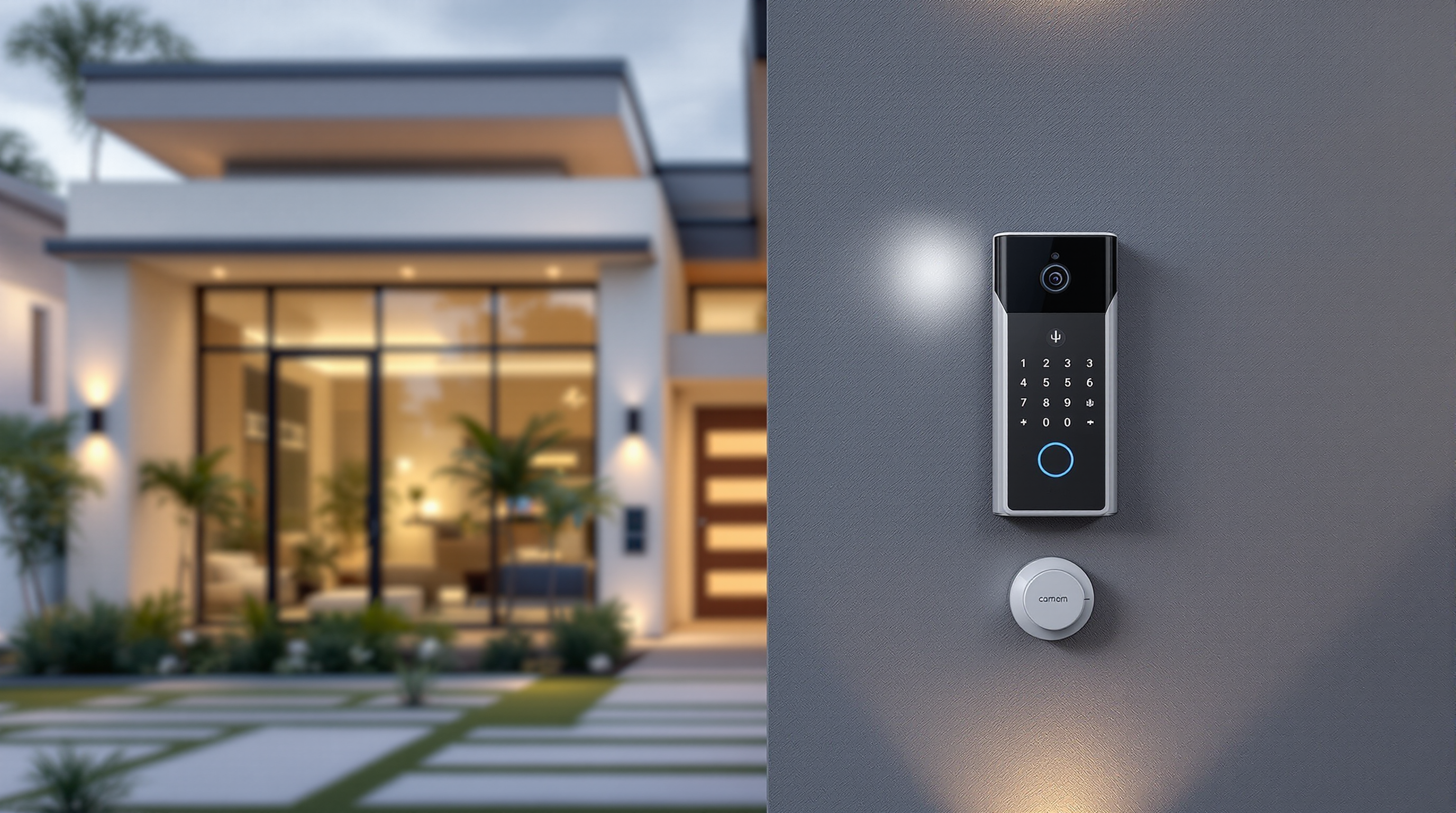 [shortcode_cta text=”Secure Your Home Today”]
[shortcode_cta text=”Secure Your Home Today”]
The Smart Security Revolution in 2025
The smart home security landscape in 2025 is characterized by unprecedented technological integration, offering homeowners extraordinary control and peace of mind. The global home security market is projected to reach an astounding $78.9 billion by 2025, demonstrating a Compound Annual Growth Rate (CAGR) of 8.4%, driven by increasing security concerns and seamless smart home technology integration.
This transformation isn’t just about traditional alarms and cameras. Modern 2025 systems incorporate artificial intelligence, facial recognition, advanced automation, and complete ecosystems that connect every aspect of home security. From AI-powered alerts that reduce false alarms to integration with voice assistants and IoT devices, smart security has become the central nervous system of the modern home.
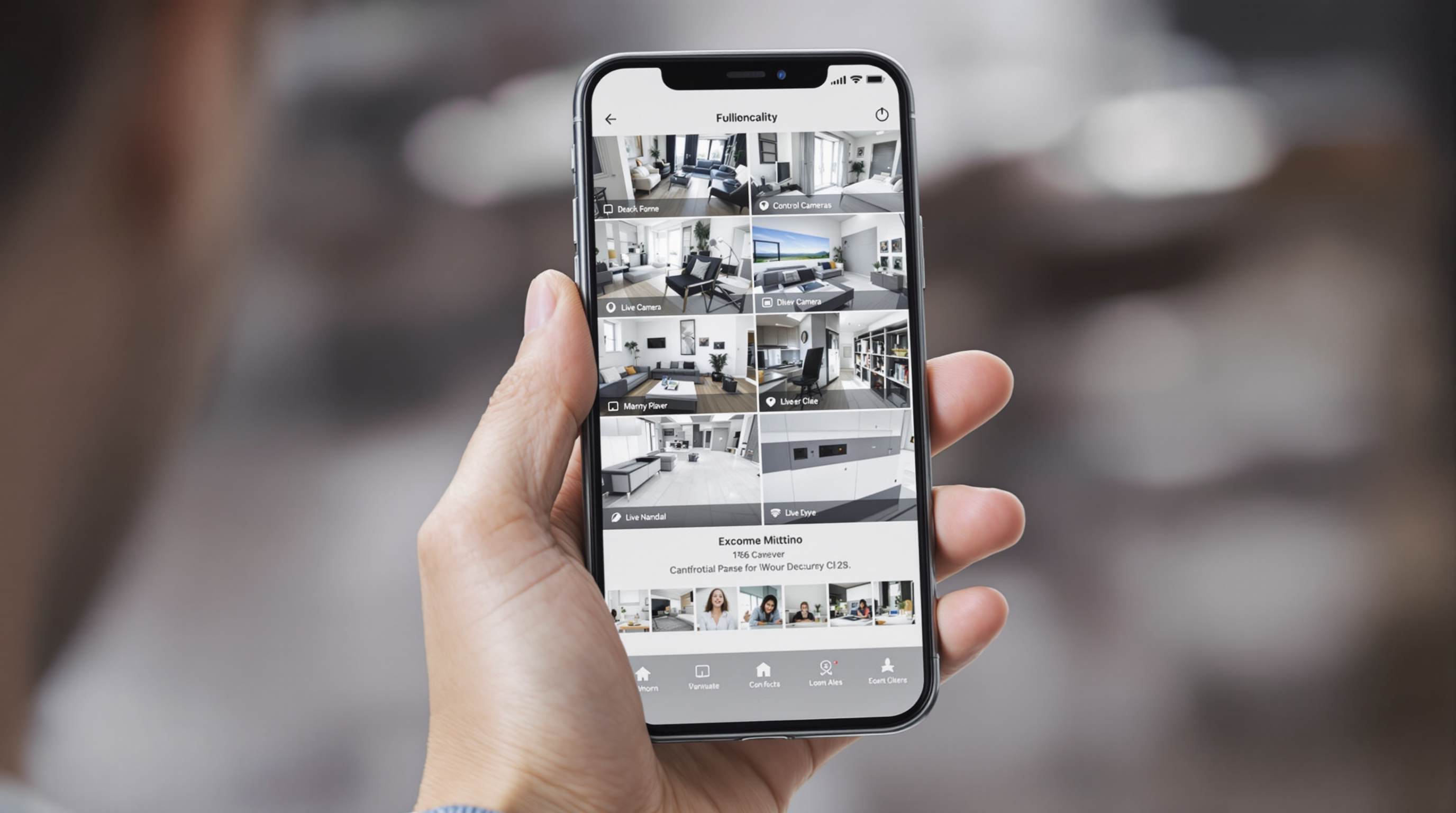
Revolutionary Features of 2025
- Predictive AI: Systems that learn family patterns and detect anomalies before incidents occur
- Total Integration: Seamless connectivity with over 10,000 third-party devices
- Automated Response: Automatic actions like door locking, light activation, and authority notification
- Environmental Monitoring: Real-time detection of smoke, CO, floods, and air quality
- Advanced Cybersecurity: Military-grade encryption and hacking protection
Key Considerations: Choosing the Perfect System
1. Monitoring Options: Professional vs. Self-Monitoring
Self-Monitoring
This economical option allows homeowners to receive alerts and access live video streams directly, managing security events themselves. It offers adequate features for staying updated on detected activity but requires the user to take direct action when incidents occur.
Self-Monitoring Advantages:
- Reduced or eliminated monthly costs
- Complete control over alert responses
- Flexibility to customize notifications
- Ideal for tech-savvy homeowners
Professional Monitoring
For greater peace of mind, professional monitoring centers provide 24/7 supervision. They respond to alerts and can dispatch authorities if the homeowner isn’t available, ensuring action is taken even when you’re unavailable.
Professional Monitoring Benefits:
- Guaranteed 24/7/365 response
- Automatic emergency services contact
- Backup during vacations or extended absences
- Potential reduction in home insurance premiums
2. Installation: DIY vs. Professional
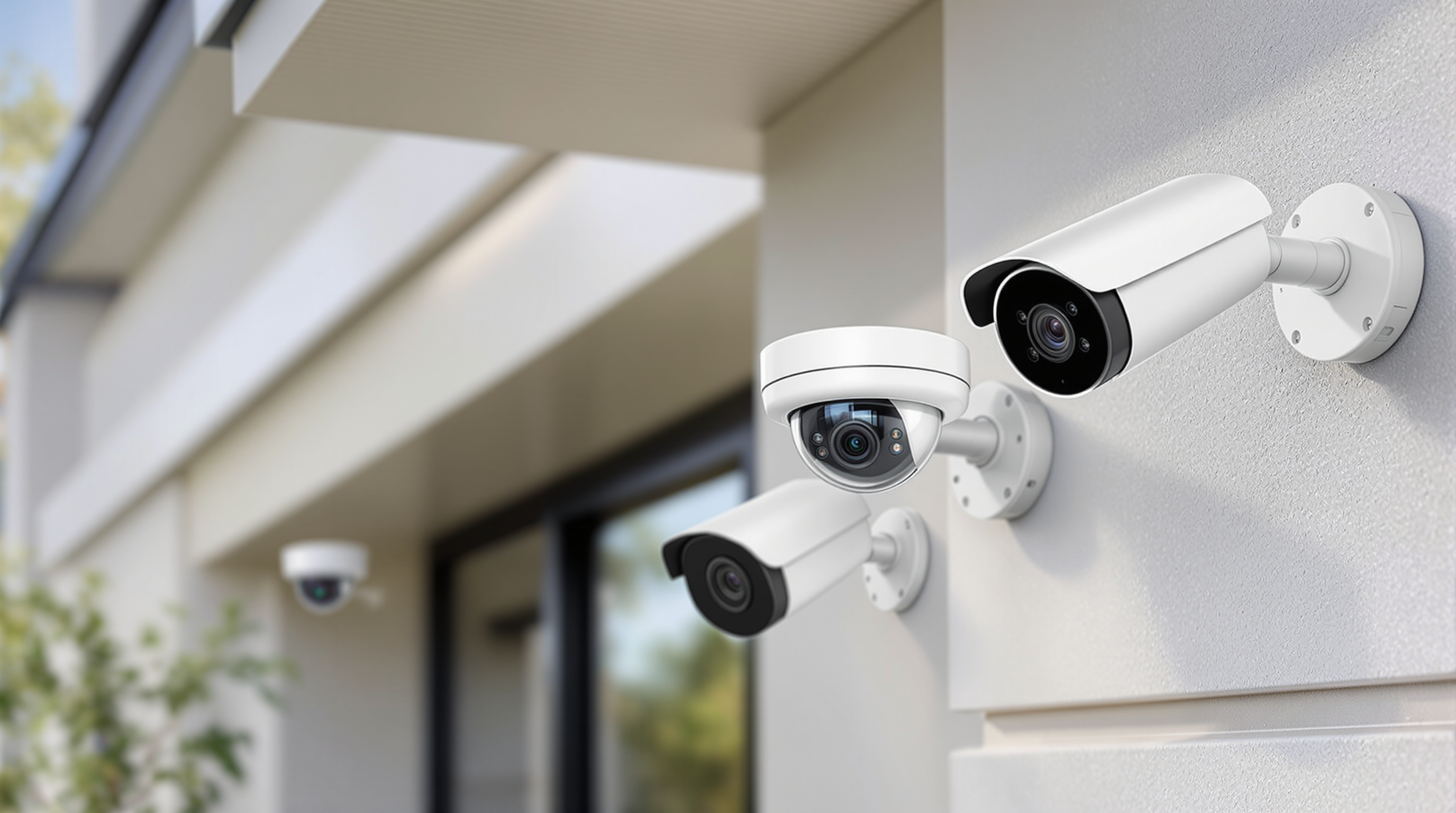
DIY Installation
Typically free and designed for easy setup with minimal tools. Offers flexibility, allowing users to add equipment or move the system to a new residence without additional fees. SimpliSafe is particularly notable for its quick and easy DIY installation, often completed in 30 minutes.
Professional Installation
While incurring extra costs, professional installation ensures the system is configured correctly and often includes an in-depth tutorial. However, expanding the system or moving may require additional installation fees.
3. Ease of Use and App Experience
Daily interaction with the security system, primarily through its mobile app, should be intuitive and responsive. Critical actions like arming/disarming should be simple, and alerts and video streams should load quickly without errors.
4. Advanced Features and Add-ons
A system’s effectiveness is determined by its capabilities. Essential features include real-time alerts, video storage, and power backup. Higher-tier plans often include advanced features like cellular backup.
Essential Smart Home Integrations:
- Amazon Alexa: Voice control and automations
- Google Assistant: Voice commands and smart routines
- Apple HomeKit: Integration with iOS ecosystem
- IFTTT: Advanced custom automations
- Z-Wave/Zigbee: Connectivity with thousands of devices
Best Smart Security Systems 2025: Detailed Reviews
1. SimpliSafe Home Security System – Best Overall
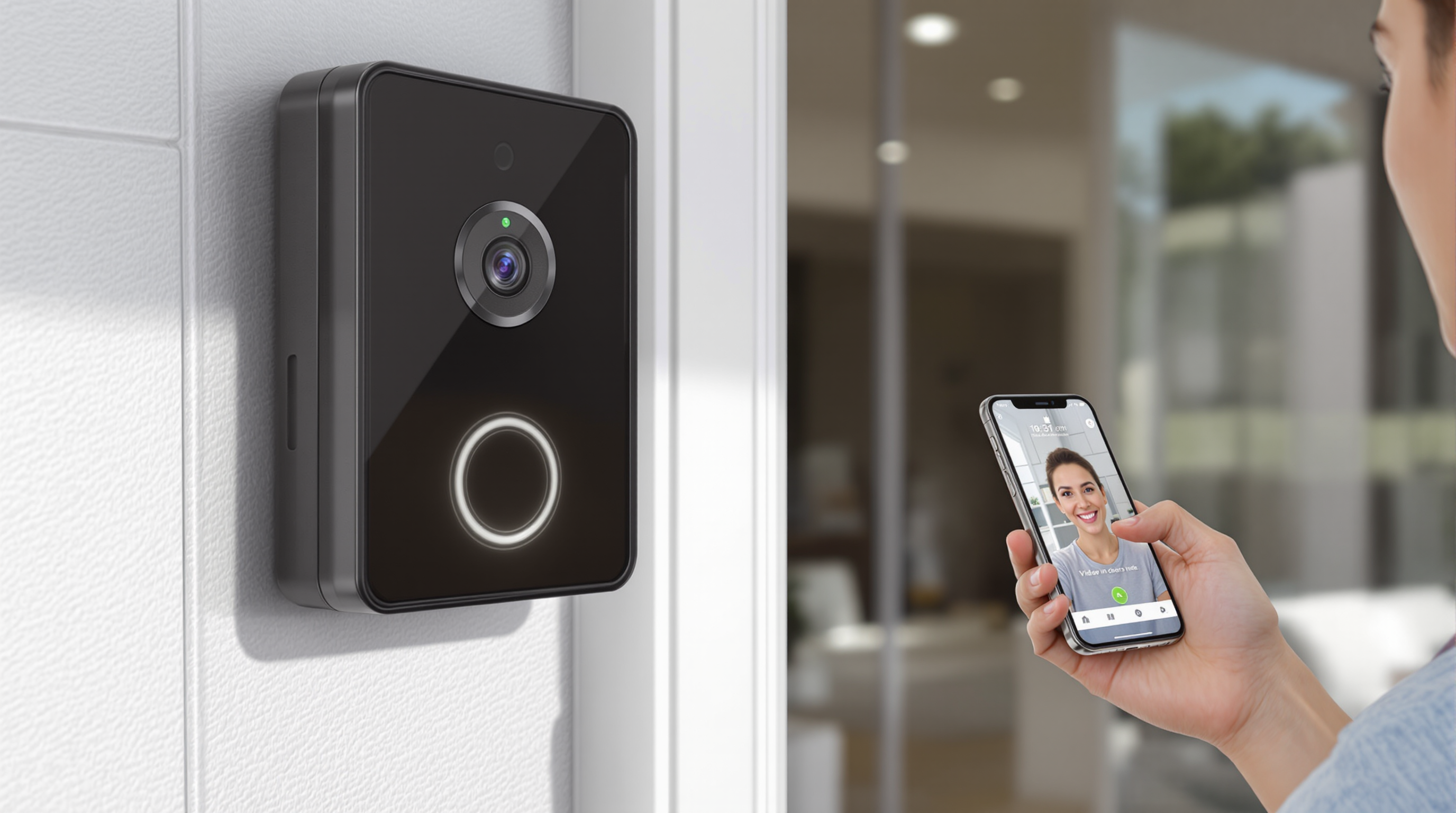
Starting Price: $249.96
Monthly Monitoring: From $20/month (no contract)
Installation: Free DIY or optional professional
Best For: Homeowners seeking flexibility and ease of use
SimpliSafe has been PCMag’s number one choice and Readers’ Choice award winner for six consecutive years. Its combination of affordable hardware, reasonable monitoring fees, and flexible configuration options makes it the most balanced option on the market.
Standout Features:
- FastProtect Monitoring: Includes 24/7 Live Guard protection
- Dual Connectivity: Wi-Fi and cellular with automatic backup
- No Contracts: Flexibility to switch between self-monitoring and professional
- Quick Installation: Typical setup in 30 minutes
- Portability: Ideal for renters or frequent movers
Testing Performance:
During testing, SimpliSafe cameras performed well with minimal interruptions. Sensors worked as expected, triggering alerts within 10 seconds. Camera quality is above average in its price range.
Limitations:
- Limited integration with smart home devices
- Glass break sensors could be more sensitive
- Not natively compatible with Apple HomeKit
- Keypad design may seem outdated
2. Vivint Smart Home – Best for Professional Automation
Starting Price: $599
Monthly Monitoring: From $19.99/month
Installation: Professional required ($49-$199)
Contract: 60 months (if not purchased outright)
Vivint is a comprehensive, professionally installed and monitored system known for its robust smart home integration and high-quality equipment. It offers the most premium experience in home automation.
Premium Features:
- 7″ Touch Panel: Responsive and colorful control
- Total Remote Control: Locks, cameras, thermostats, lights, and cars
- Z-Wave Integration: Compatible with thousands of devices
- Fast Response: Fastest event response times in testing
- 24/7 Monitoring: Continuous professional support
Exceptional Performance: Vivint’s camera quality was exceptional in testing, providing consistent clarity day and night. Motion sensors worked as expected and weren’t triggered by large dogs.
Cost Considerations: Vivint is the most expensive offering, with high upfront equipment and installation costs, plus requiring monthly subscription for remote access and professional monitoring.
3. ADT Command – Most Popular and Best Customer Service
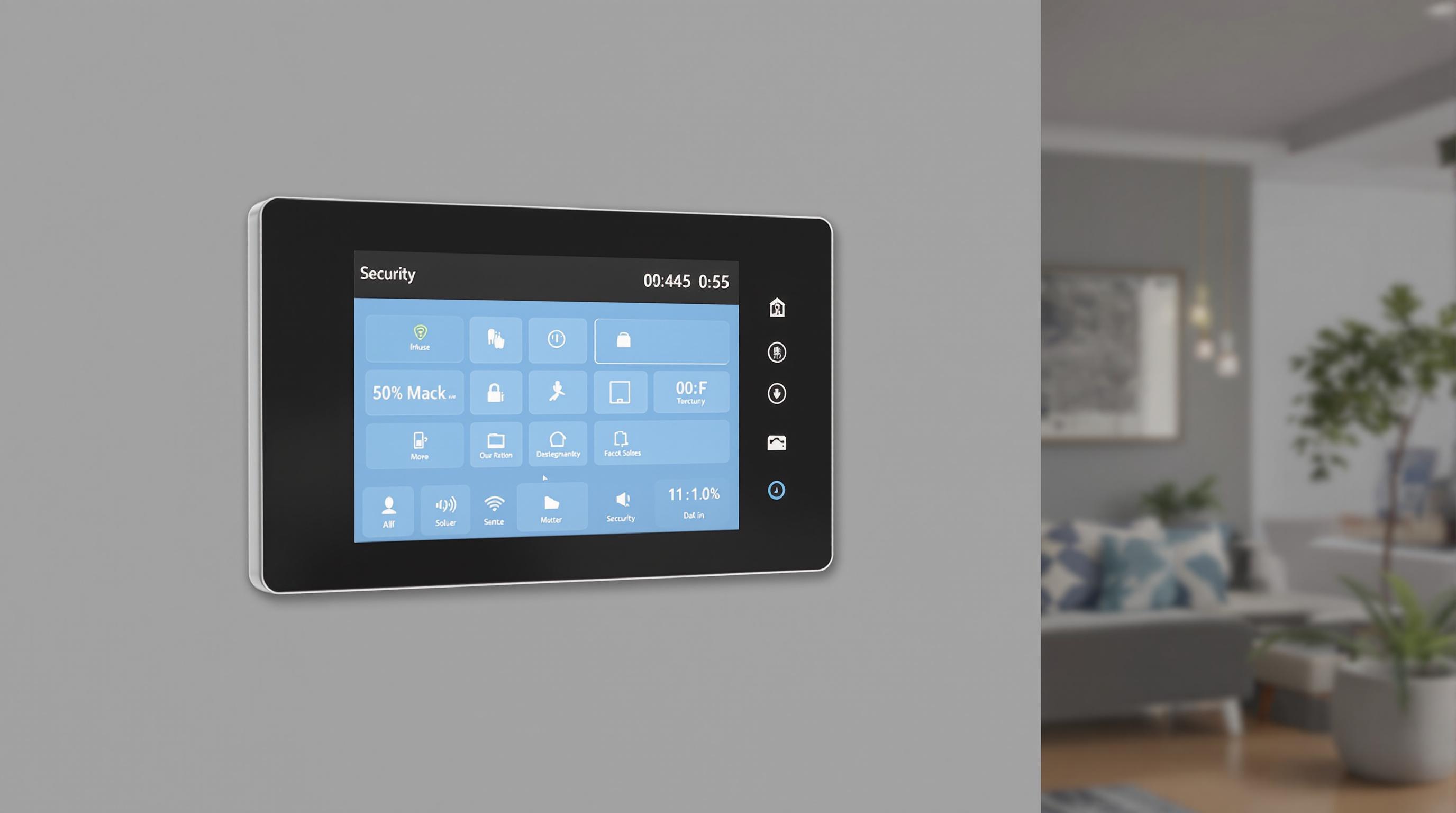
Starting Price: $599
Monthly Monitoring: From $29.99/month
Installation: Professional included
Contract: 36 months required
ADT is a long-standing industry leader known for its comprehensive professionally installed and monitored systems, excellent customer service, and extensive smart home integrations.
ADT Advantages:
- “White-Glove” Service: Exceptional customer service experience
- Expansive Lineup: Wide range of security and automation components
- Z-Wave Support: Integration with third-party devices
- Excellent Apps: Superior mobile and web experiences
- Trial Period: Generous 182-day trial
Camera Performance: ADT cameras excelled in testing, capturing facial features at 20 feet during the day, the best among tested companies. Audio quality in the mobile app was superior to most other systems.
Multiple Integrations: Compatible with 10 smart home systems, including Amazon Alexa, Google Assistant, Apple HomeKit, Sonos, and Rainbird.
4. Ring Alarm Security Kit – Best Integrated Ecosystem
Starting Price: $199.99
Monthly Monitoring: From $0 (self-monitoring)
Installation: Free DIY or professional ($159.99)
Contract: No contract required
Ring Alarm is a versatile and affordable DIY home security system, particularly strong for users already invested in the Ring ecosystem. The Ring Alarm Pro uniquely combines security with a Wi-Fi 6 mesh router.
Ring’s Unique Features:
- Robust Ecosystem: Over 10 million US households
- Ring Alarm Pro: Integrated Wi-Fi 6 mesh router
- Complete Backup: 24-hour auxiliary battery, cellular radio
- Extensive Inventory: Versatile and affordable pricing
- Excellent App: Simple self-monitoring experience
Testing Performance: Ring Alarm installation and monitoring were above average. While cameras excelled at short distances, quality diminished with distance. Motion, entry, and glass break sensors worked as expected.
5. Abode iota All-In-One – Best Smart Home Compatibility
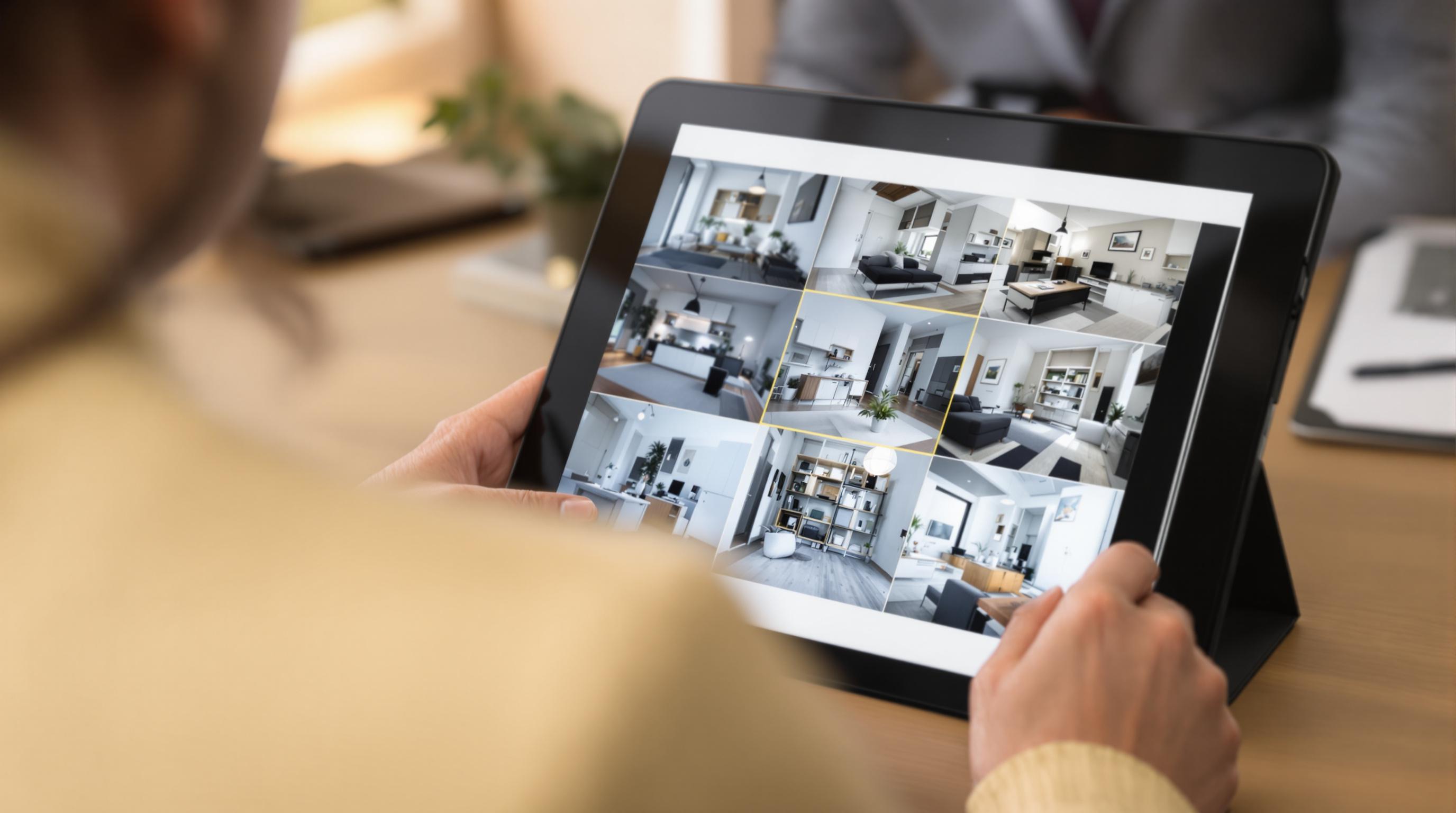
Starting Price: $379.99
Monthly Monitoring: From $8/month (free option available)
Installation: DIY
Best For: Smart home enthusiasts
The Abode iota is a versatile DIY security system featuring a base station with integrated camera and motion sensor, offering extensive compatibility with third-party smart home devices.
Compatibility Advantages:
- Multiple Radios: Wi-Fi, Z-Wave, and Zigbee
- Universal Support: Apple HomeKit, Alexa, Google Assistant, IFTTT
- Local Storage: On-device storage option
- On-Demand Monitoring: Professional monitoring flexibility
- 1080p Camera: Sharp integrated image quality
Considerations: Some components can be expensive, and there’s no free cloud storage, but integration versatility is unmatched.
[shortcode_price_comparison category=”security_systems”]Specialized Systems: Solutions for Specific Needs
Best Outdoor Cameras: Arlo Pro 3 Floodlight
Price: $168.98
Features: 3,000-lumen lights, siren, two-way audio, wide view
The Arlo Pro 3 Floodlight combines powerful lighting with advanced surveillance, offering active deterrence and high-quality monitoring for outdoor spaces.
Best Wireless System: Blink Indoor
Price: $51.99 (single camera)
Features: Two-way audio, easy installation, available up to 5 cameras
Affordable and easy-to-install wireless camera system, effective for deterring theft inside the home, though with limited continuous live view.
Best for Families: Amcrest 1080P Wi-Fi Camera
Price: $29.99
Ideal For: Baby and child monitoring
Small and discreet Wi-Fi camera, ideal for monitoring children or caregivers, offering two-way audio, motion detection, zoom, and tilt capabilities.
Best No Hidden Costs: EufyCam 2 Pro
Price: $221.99 (2-camera system)
Advantage: One-time purchase, no monthly fees
Self-installable wireless camera system offering local storage, eliminating the need for monthly service fees. Compatible with Apple HomeKit, Google Assistant, and Amazon Alexa.
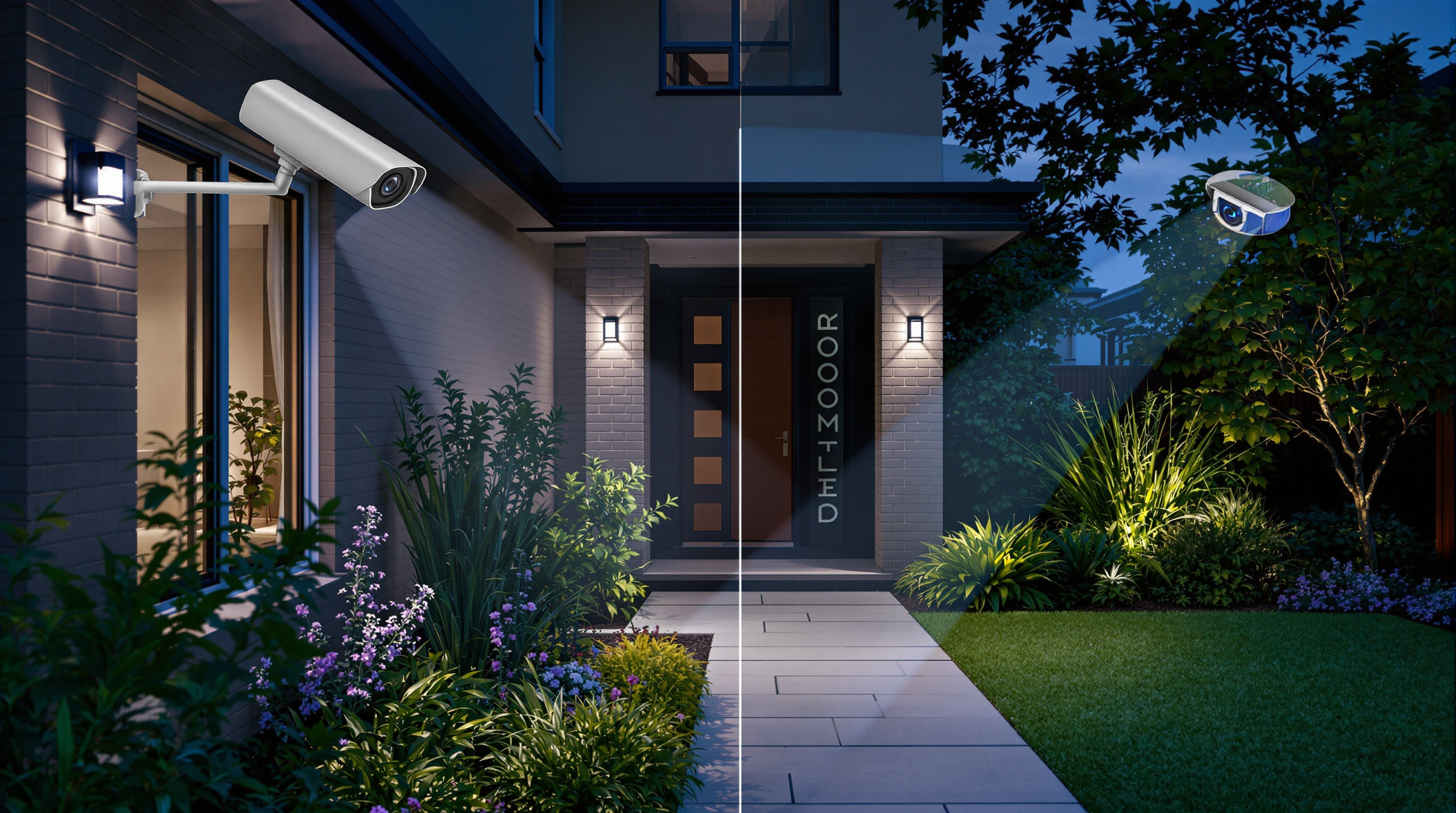
Emerging Technologies in Smart Security 2025
Artificial Intelligence and Machine Learning
AI is fundamentally transforming home security, moving beyond traditional alarms to offer intelligent and proactive protection. The smart home security market is projected to grow from $52.5 billion in 2020 to $104.9 billion by 2025.
AI-Powered Alerts
Systems use artificial intelligence to analyze sensor and camera data, reducing false alarms and providing more accurate and actionable insights. This technology can distinguish between:
- Human movement vs. pets
- Familiar vs. unknown vehicles
- Normal vs. suspicious activity patterns
- Real emergencies vs. false alarms
Advanced Facial Recognition
Advanced cameras can identify known individuals, distinguishing residents from strangers and improving security protocols. This technology enables:
- Automatic access for family members
- Specific alerts for unknown visitors
- Personalized activity logging
- Integration with access control systems
Complete Ecosystem Integration
The ability to connect with smart thermostats, lighting, locks, and even garage door openers creates a cohesive smart home ecosystem. This enables automated responses like lights turning on when motion is detected, doors automatically locking, and potential energy cost reduction up to 30%.
Advanced Connectivity Protocols
- Wi-Fi 6: Greater bandwidth and lower latency
- 5G: Ultra-fast connectivity for cellular backup
- Thread/Matter: Universal interoperability standards
- Edge Computing: Local processing for instant response
Cybersecurity and Privacy
Modern systems implement:
- End-to-End Encryption: Data protection in transit and at rest
- Multi-Factor Authentication: Additional layers of access security
- OTA Updates: Automatic security patches
- Local Storage: Options to keep data at home
Installation and Configuration Guide
Pre-Installation Preparation
Home Security Assessment
Before installing any system, conduct a comprehensive assessment:
- Entry Points: Identify all doors, windows, and access points
- Vulnerable Areas: Blind spots, basements, garages
- Wi-Fi Coverage: Verify strong signal at all device locations
- Power Sources: Plan outlet locations and battery placement
- Lines of Sight: Ensure optimal camera coverage
DIY Tools Needed
- Drill with various bits
- Phillips and flathead screwdrivers
- Bubble level
- Stud finder
- Ladder or step stool
- Measuring tape
Step-by-Step Installation Process
1. Base Station Setup
Place the base station in a central location, near the Wi-Fi router, with access to power and phone line (if required). Avoid areas with electronic interference.
2. Sensor Installation
Door/Window Sensors:
- Install on the frame, not the moving surface
- Maintain alignment within 1/2 inch
- Test opening/closing before finalizing
Motion Sensors:
- 7-8 feet height for optimal coverage
- Avoid pointing toward windows or heat sources
- Consider pet traffic patterns
3. Camera Placement
Indoor Cameras:
- Room corners for maximum coverage
- 8-10 feet height to prevent tampering
- Avoid pointing toward windows (backlighting issues)
Outdoor Cameras:
- Protection under eaves or covers
- 15-30 degree downward angle
- Adequate lighting for night vision
- Access for maintenance
Software and App Configuration
Initial Setup
- Download the manufacturer’s official app
- Create account with strong password
- Connect base station to Wi-Fi
- Add devices one by one
- Test each component individually
- Configure notifications and alerts
Settings Optimization
- Sensor Sensitivity: Adjust to reduce false alarms
- Detection Zones: Define specific areas for monitoring
- Arming Schedules: Automate activation/deactivation
- Emergency Contacts: Configure multiple numbers
Cost Comparison: Total Value Analysis
Cost Breakdown by System
| System | Initial Cost | Installation | Monthly Monitoring | 3-Year Cost |
|---|---|---|---|---|
| SimpliSafe | $249 | $0 (DIY) | $20 | $969 |
| Ring Alarm | $199 | $0 (DIY) | $10 | $559 |
| Abode iota | $379 | $0 (DIY) | $8 | $667 |
| Vivint | $599 | $199 | $39.99 | $2,237 |
| ADT Command | $599 | $0 | $45.99 | $2,254 |
Value Considerations
When evaluating total cost, consider:
- Equipment Quality: Higher upfront costs often mean better reliability
- Monitoring Quality: Professional monitoring provides peace of mind
- Insurance Discounts: Many insurers offer 5-20% discounts for monitored systems
- Expansion Costs: Factor in future device additions
- Contract Flexibility: No-contract options provide more freedom
Smart Home Integration and Automation
Popular Integration Platforms
Amazon Alexa Integration
Most security systems now offer Alexa compatibility, allowing voice control for:
- Arming and disarming systems
- Checking system status
- Viewing camera feeds on Echo Show devices
- Creating custom routines and automations
Google Assistant Features
Google integration provides:
- Voice commands for system control
- Integration with Google Nest devices
- Automated routines based on location
- Smart display compatibility
Apple HomeKit Benefits
For iOS users, HomeKit offers:
- Secure local processing
- Siri voice control
- Integration with other HomeKit devices
- Advanced automation scenarios
Advanced Automation Scenarios
Vacation Mode:
- Automatically arm all sensors
- Randomize light schedules
- Adjust thermostat for energy savings
- Increase camera recording sensitivity
Bedtime Routine:
- Lock all doors automatically
- Arm perimeter sensors
- Dim lights gradually
- Activate sleep mode on cameras
Welcome Home:
- Disarm system via geofencing
- Turn on entry lights
- Adjust thermostat to comfort settings
- Play welcome message through speakers
Privacy and Data Security Considerations
Data Protection Best Practices
Encryption Standards
Look for systems that offer:
- AES-256 Encryption: Military-grade data protection
- TLS 1.3: Latest secure communication protocol
- End-to-End Encryption: Data protection from device to cloud
- Local Processing: Reduced cloud dependency
Privacy Controls
Essential privacy features include:
- Granular sharing controls
- Data retention policies
- Right to delete stored data
- Transparent privacy policies
Regulatory Compliance
Reputable security companies comply with:
- GDPR: European data protection standards
- CCPA: California Consumer Privacy Act
- SOC 2: Security and availability standards
- UL Certification: Safety and security standards
Network Security
Protect your system with:
- Strong Wi-Fi passwords (WPA3 preferred)
- Regular firmware updates
- Network segmentation for IoT devices
- VPN access for remote monitoring
Frequently Asked Questions (FAQ)
Do I need professional monitoring?
Professional monitoring provides 24/7 response and emergency dispatch, ideal for frequent travelers or those wanting maximum protection. Self-monitoring works well for tech-savvy users who are usually home.
Can I install a security system myself?
Most modern systems are designed for DIY installation with simple tools. However, complex setups or hardwired systems may benefit from professional installation.
How much does home security monitoring cost?
Monthly monitoring ranges from $10-$50, depending on features. Basic monitoring starts around $10-20, while comprehensive plans with video storage and smart home integration cost $30-50.
Will a security system lower my insurance premiums?
Many insurers offer 5-20% discounts for monitored security systems. Contact your insurance provider to confirm available discounts and requirements.
What happens if my internet goes down?
Quality systems include cellular backup that automatically activates when Wi-Fi fails. This ensures continuous monitoring and alerts even during internet outages.
How long do security system batteries last?
Most wireless sensors use batteries lasting 3-5 years. Systems typically provide low battery alerts well in advance, and many use standard batteries for easy replacement.
Can I take my security system when I move?
DIY systems are typically portable and can be moved to new homes. Professional systems may require reinstallation fees or equipment replacement depending on the new home’s layout.
Are smart security systems vulnerable to hacking?
Reputable systems use strong encryption and regular security updates. Choose established brands, use strong passwords, and keep firmware updated to minimize risks.
Conclusion: Securing Your Home’s Future
The smart home security landscape in 2025 offers unprecedented protection, convenience, and peace of mind. Whether you’re looking for basic intrusion detection or comprehensive home automation, there’s a system perfectly suited to your needs and budget.
Our top recommendations for 2025:
- Best Overall Value: SimpliSafe for flexibility and reliability
- Best Premium Experience: Vivint for comprehensive automation
- Best Customer Service: ADT Command for professional support
- Best DIY Option: Ring Alarm for ecosystem integration
- Best Smart Home Integration: Abode iota for device compatibility
Remember to prioritize your specific needs: DIY vs. professional installation, self-monitoring vs. professional monitoring, and basic security vs. comprehensive automation. With the right system, you’ll enjoy enhanced security, convenience, and the peace of mind that comes with knowing your home and family are protected by cutting-edge technology.
The investment in a quality smart security system pays dividends in protection, convenience, and often insurance savings. Choose wisely, and enjoy the confidence that comes with a truly secure smart home.
[shortcode_cta text=”Secure Your Home Today”]
Last Updated: October 5, 2025
Author: NextGadgetInsights Smart Home Team